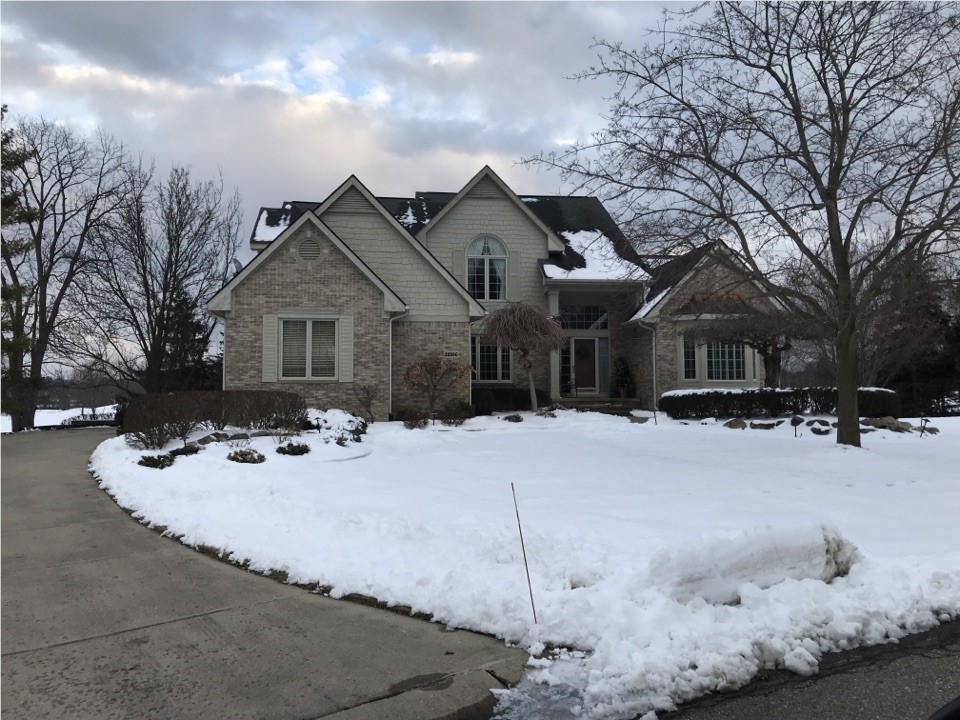
Facing a wintertime roof leak can be a bit of a puzzle, and you might feel like waiting for the spring thaw is the easiest route. But hey, a winter roof leak can signal some important issues that deserve attention pronto! The team at Feazel has gathered info on what could be causing those leaks during the chilly season and answered some questions you might have about it. Let's tackle this together!
Understanding Why your Roof Leaks in The Winter
It is completely normal to feel concerned or even stressed whenever you see a leak in your roof. A good place to start your journey of peace of mind, is figuring out what is the source of your leak. Once you figure that out, you can move forward in finding the necessary steps and address the problem. The most common reasons for a roof leaking in the winter include:
- Formation of Ice Dams: Ice dams take shape when winter precipitation on your roof undergoes melting and subsequently refreezes, forming a barrier of ice along the roof's edge. This process can result in the dislodgment of your asphalt shingles, leading to water leaks. Additionally, ice dams can impede the proper drainage of melted ice and snow water on your roof. Failure to remove the ice dam and facilitate appropriate water drainage may result in water damage and leaks.
- Attic Condensation: Have you observed moisture accumulation in your attic during the winter season? This phenomenon likely stems from condensation. The process involves the upward movement of warm indoor air into the attic, where it encounters cooler temperatures and subsequently condenses.
Now, here's the kicker – that excess moisture hanging around in your attic could spell trouble. This could lead potential mold, pesky mildew, and the dreaded leaks. If you notice any of these, it might be time to delve into the world of attic ventilation and moisture management. Your home will thank you later!
- Bathroom Exhaust Fans: Bathroom exhaust fans are designed to vent directly outside. However, if yours vents into the attic, this can introduce warm and moist air into the attic space, leading to the formation of condensation. Should this condensation freeze and subsequently thaw in the attic, it could manifest as drips resembling a roof leak. Although you may not see the leak on the exterior walls of your home, it’s a good idea to examine the interior walls.
- Clogged Gutters: When leaves and debris clog your gutters, the impact on your roof mirrors that of an ice dam. Hindered gutters fail to channel melted ice and snow away from your roof, leading to pooled water that can result in roof leaks. It is crucial to address clogged gutters promptly to prevent potential water-related damage to your roof.
- Damaged Flashing: Let’s be honest, we all have put some home repairs tasks on the “I will do that later” list and have forgotten about them. Flashing problems are a big factor to investigate when you notice a leak. When compromised, melting ice and snow find pathways to seep through, potentially leading to leaks. It is advisable to address flashing repairs promptly to safeguard your roof from water-related issues.
- Damaged Shingles: If your residence has weathered a winter storm with forceful wind gusts or hail, the source of your leak could be storm damage. Even a minor, unnoticed breach in your roof can escalate into significant issues including eventual structural damage.
What Should Be Done After I Find a Leak?
If you suspect a roof leak, the first thing you should do is contact a local roofing company for a professional roof inspection. Catching a leak in its early stages not only saves you from a headache but can also spare you the woes of a complex and pricier roof leak repair. Taking swift action with a thorough inspection is key to preserving the integrity of your roof and avoiding potential issues down the line, like needing a full roof replacement particularly with the challenges posed by roof leak repair in winter.
Can You Repair a Roof in The Winter?
The answer isn't one-size-fits-all. There are instances where a roofing professional can indeed provide the service you require. Yet, if the weather or the state of your roof poses significant hazards, either for you or the roofing crew, it could be advisable to hold off until spring.
Nevertheless, initiating contact with a roofer and beginning the planning process for your roof repair sooner rather than later is always a wise move. Procrastination might only lead to further complications, so don't hesitate—reach out to roofing contractors soon as you can!
Preventing Roof Leaks in Winter
To ward off winter roof leaks, kick off your prep by cleaning those gutters before the chill sets in. Insufficient Insulation could be a causing factor, so verifying its condition and quantity will help you determine if you have proper insulation.
Take a proactive step by scheduling a roof inspection with a professional roofing company before the winter months hit. And for an added layer of protection, consider looking into this blog we wrote where we talk about ways of preventing ice dams—it could make all the difference in keeping your roof snug and leak-free during the frosty season.
Tags
Subscribe to Feazel's Blog




Comments